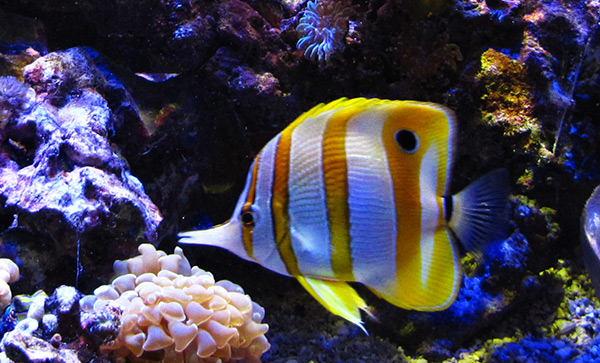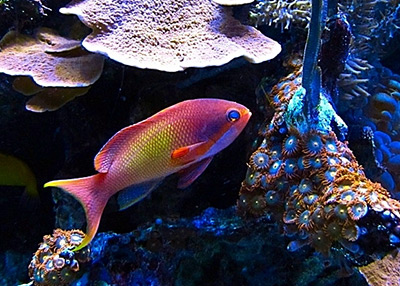Everything about fish is amazing and fascinating. To me, the most fascinating thing about fish (beside their taste) is their lateral line system. The lateral line is the most important thing fish possess because without it, they would get around about as well as a supermodel in a bikini but no high heels.
All fish have a lateral line, and you can usually see it. It is a line of scales that are slightly different from the rest of the fish’s scales, and they run from near their mouth, around the eye, to the tail. That line is made up of epithelial cells, which are basically modified skin cells. They are mucus-filled canals that have hair cells in them—kind of like what we have in our ears to help us determine which direction our spouse is yelling at us from. For our participation in this hobby, we don’t need to know exactly how all this works, but you can delve into it if you desire.
Basically, the lateral line system allows the fish to know what is around it, what it is chasing, and how close it is to anything solid, including other fish, which is how millions of fish can swim in a school and never touch each other. I rode on the New York City subway system for 40 years, and I can assure you that none of those people had a lateral line system!
This system is a huge help to fish, but in an aquarium, it can also be a liability. Think about this for a minute: A fish in the sea has no barriers. It can roam all over the place as long as it avoids the bottom, other fish, and rocks. The lateral line system works just like sonar in a submarine and lets the fish avoid obstacles and predators. Of course, predators also have a lateral line system, which is why so many fish get eaten. But a tank is made out of glass, which the fish can sense but not see. The glass surrounds the fish so the fish can detect only a very short distance around or under it.

As noted in my subway example, we humans don’t possess such a system, but plenty of us are claustrophobic, and if we’re put in a small space, such as an MRI machine, we can go nuts. Of course many of us have no fear of tight places. We can, of course, just avoid tight spaces, but our fish are at our mercy and know they are confined.
A schooling fish, such as a tang, always swims in very close proximity to other tangs in its school. Most tangs are never alone, and they depend on the mindset of the entire school to determine when to turn, when to eat, and when to flee. Now, when we take that tang and put it in a tank, there is no school. There are no other fish within inches of it, no other fish for it to take cues from. But there is that glass—that obstacle near it that seems to always move with it. It can’t get away. It can’t find open water. It can’t go deeper. Then we wonder why tangs are known as ich magnets. I wonder if this tank situation causes HLLE, which always starts where the lateral line does, on the head.
Have you ever tried to catch a fish with a net? Of course you have. I bet you didn’t catch it very easily unless you cheated and trapped it next to a rock or the glass. Healthy fish can easily avoid a net because they are much faster than we are and their lateral line instantly lets them know exactly where the net is. Have you ever seen a fish crash into the glass? No you haven’t. Fish don’t crash, as I have never seen one with a bloody nose. Not even in the dark. Have you ever seen a fish get cut on coral or a rusty fender from a 1957 Oldsmobile? I bet you haven’t. Fish can even get along quite well if they lose an eye and sometimes both eyes. Blind cave fish don’t even have eyes, and you still can’t catch them with a net unless you trap them.
If you scuba dive, you will see dozens of fish all dive into a coral head at the same time. If you are wearing a Speedo, they will cram themselves in tighter. They don’t even know whether they will fit, but they get in. They don’t even jam themselves into the same hole as other fish. And they all come out just fine, no scratches.
For an experiment, you can take a permanent marker and draw a line from your eye, down your sides, right to your toes. Then blindfold yourself and run through a forest or Times Square in Manhattan on New Year’s Eve. I bet you come out all beaten up and bloody.
That’s because you are not a fish.



